
 (732) 246-1377
(732) 246-1377
 (732) 246-1377
(732) 246-1377 Jae Crowder of the Boston Celtics had an MRI for the sprained ankle injury he sustained in the game against the Houston Rockets. Crowder suffered a fall with about 9 minutes in the third quarter remaining and was not able to get back up. Crowder headed to the locker room with team trainer Ed Lacerte and had his injury diagnosed as a sprained ankle. He was unable to return to the game.
Jae Crowder of the Boston Celtics had an MRI for the sprained ankle injury he sustained in the game against the Houston Rockets. Crowder suffered a fall with about 9 minutes in the third quarter remaining and was not able to get back up. Crowder headed to the locker room with team trainer Ed Lacerte and had his injury diagnosed as a sprained ankle. He was unable to return to the game.
Ankle sprains are common, but need immediate attention.If you have any concerns about your feet or ankles, contact one of our podiatrists of Livingston Footcare. Our doctors will treat your foot and ankle needs.
How Does an Ankle Sprain Occur?
Ankle sprains take place when the ligaments in your ankle are torn or stretched beyond their limits. There are multiple ways that the ankle can become injured, including twisting or rolling over onto your ankle, putting undue stress on it, or causing trauma to the ankle itself.
What are the Symptoms?
● Mild to moderate bruising
● Limited mobility
● Swelling
● Discoloration of the skin (depending on severity)
Preventing a Sprain
● Wearing appropriate shoes for the occasion
● Stretching before exercises and sports
● Knowing your limits can aid in prevention
Treatment of a Sprain
Treatment of a sprain depends on the severity. Many times, people are told to rest and remain off their feet completely, while others are given an air cast. If the sprain is very severe, surgery may be required.
If you have suffered an ankle sprain previously, you may want to consider additional support such as a brace and regular exercises to strengthen the ankle.
If you have any questions feel free to contact our office located in North Brunswick, NJ. We offer the newest diagnostic tools and technologies to fit your foot and ankle needs.
 According to the World Health Organization (WHO), “about 1.2 billion people worldwide are officially classified as overweight.” The top offending countries in this category include India, the U.S., and China. Not only is obesity extremely unhealthy, but it can cause many different chronic health problems if not addressed properly. Obesity can lead to problems such as infertility and pregnancy complications in women, as well as hormonal imbalances. Solutions to address obesity include preparing weight loss programs, changing your diet, moving around often, quitting smoking and drinking, and seeing your doctor.
According to the World Health Organization (WHO), “about 1.2 billion people worldwide are officially classified as overweight.” The top offending countries in this category include India, the U.S., and China. Not only is obesity extremely unhealthy, but it can cause many different chronic health problems if not addressed properly. Obesity can lead to problems such as infertility and pregnancy complications in women, as well as hormonal imbalances. Solutions to address obesity include preparing weight loss programs, changing your diet, moving around often, quitting smoking and drinking, and seeing your doctor.
Any additional problems in the feet of those with obesity can be detrimental to foot health. If you have any concerns, contact one of our podiatrists of Livingston Footcare. Our doctors will treat your foot and ankle needs.
Obesity and your Feet
Since your feet are what support your entire weight when standing, any additional weight can result in pain and swelling. Being overweight is one of the main contributors to foot complications.
Problems & Complications
Extra Weight – Even putting on just a few extra pounds could create serious complications for your feet. As your weight increases, your balance and body will shift, creating new stresses on your feet. This uneven weight distribution can cause pain, even while doing the simplest tasks, such as walking.
Diabetes – People who are overweight are at serious risk of developing type-2 diabetes, which has a drastic impact on the health of your feet. As you get older, your diabetes might worsen, which could lead to loss of feeling in your feet, sores, and bruises. You could also become more prone to various infections.
Solutions
Footwear – Specially made footwear that supports your joints, arches, and ankles, and allows room for good circulation is a great option to mitigate pressure and pain. A podiatrist will help you decide what works best for your specific needs.
Exercise – Exercise will help alleviate the pain and give your feet the strength it needs to support your body. Exercise also increases blood flow to your feet, allowing them to remain healthy and strong.
Most importantly, seek the help of a podiatrist for foot care if something is wrong or doesn’t seem to be working. A podiatrist will help you with any questions or information needed.
If you have any questions feel free to contact our office located in North Brunswick, NJ. We offer the newest diagnostic tools and technologies to fit your foot and ankle needs.
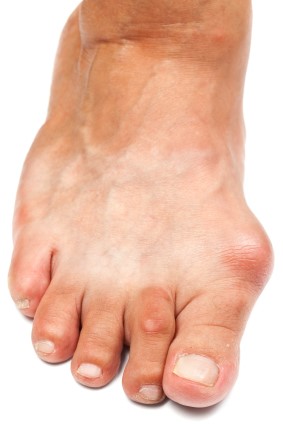 Bunions are known as a common ailment on the feet, described as being a bump alongside the big toe joint. Bunions occur when the metatarsal starts shifting toward the smaller toes. Although bunions can occur at any age, many different factors can cause them. Bunions can be inherited or caused by ill-fitting tight shoes such as high heels. One common solution for bunions is putting arch support pads or orthotics in your footwear. If your bunion condition is severe, consider anti-inflammatory medications with the permission of your podiatrist.
Bunions are known as a common ailment on the feet, described as being a bump alongside the big toe joint. Bunions occur when the metatarsal starts shifting toward the smaller toes. Although bunions can occur at any age, many different factors can cause them. Bunions can be inherited or caused by ill-fitting tight shoes such as high heels. One common solution for bunions is putting arch support pads or orthotics in your footwear. If your bunion condition is severe, consider anti-inflammatory medications with the permission of your podiatrist.
Bunion surgery usually occurs after non-surgical methods have proved to be ineffective. If you have any concerns, contact one of our podiatrists of Livingston Footcare. Our doctors will treat your foot and ankle needs.
What is a Bunion?
A bunion is formed of swollen tissue or an enlargement of boney growth, usually located at the base joint of the toe that connects to the foot. The swelling occurs by the bones in the big toe shifting inward, which impacts the other toes of the foot. This causes the area around the base of the big toe to become inflamed and painful.
Why do Bunions Form?
· Genetics – susceptibility to bunions are often hereditary
· Stress on the feet – poorly fitted and uncomfortable footwear that places stress on feet, such as heels, can cause bunions to form
How are Bunions Diagnosed?
Doctors often perform two tests – blood tests and x-rays – when trying to diagnose bunions, especially in the early stages of development. Blood tests help determine if the foot pain is being caused by something else, such as arthritis, while x-rays provide a clear picture of your bone structure to your doctor.
How are Bunions Treated?
· Refrain from wearing heels or similar shoes that cause discomfort
· Select wider shoes that can provide more comfort and reduce pain
· Anti-inflammatory and pain management drugs
· Orthotics or foot inserts
· Surgery
If you have any questions feel free to contact our office located in North Brunswick, NJ. We offer the newest diagnostic tools and technologies to fit your foot and ankle needs.
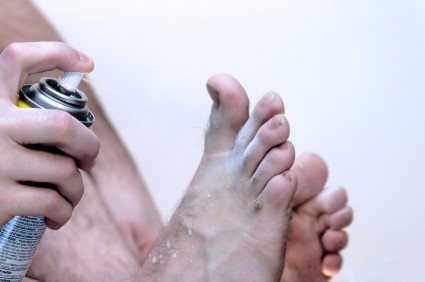 Garlic may be one potential remedy to treat foot conditions like athlete’s foot. A New York Times article suggests that garlic cloves that are finely crushed and steeped in water can offer a solution as an antifungal treatment. Athlete’s foot is caused by walking barefoot on contaminated wet surfaces and is characterized by cracked toes.
Garlic may be one potential remedy to treat foot conditions like athlete’s foot. A New York Times article suggests that garlic cloves that are finely crushed and steeped in water can offer a solution as an antifungal treatment. Athlete’s foot is caused by walking barefoot on contaminated wet surfaces and is characterized by cracked toes.
Athlete’s foot is an inconvenient condition that can be easily reduced with the proper treatment. If you have any concerns about your feet and ankles contact one of our podiatrists of Livingston Footcare. Our doctors will treat your foot and ankle needs.
Athlete’s Foot: The Sole Story
Athlete's foot, also known as tinea pedis, can be an extremely contagious foot infection. It is commonly contracted in public changing areas and bathrooms, dormitory style living quarters, around locker rooms and public swimming pools, or anywhere your feet often come into contact with other people.
Solutions to Combat Athlete’s Foot
· Hydrate your feet by using lotion
· Exfoliate
· Buff off nails
· Use of anti-fungal products
· Examine your feet and visit your doctor if any suspicious blisters or cuts develop
Athlete’s foot can cause many irritating symptoms such as dry and flaking skin, itching, and redness. Some more severe symptoms can include bleeding and cracked skin, intense itching and burning and even pain when walking. In the worst cases, athlete’s foot can cause blistering as well. Speak to your podiatrist for a better understanding of the different causes of athlete’s foot, as well as helping you figure out which treatment options are best for you.
If you have any questions feel free to contact our office located in North Brunswick, NJ. We offer the newest diagnostic tools and technologies to fit your foot and ankle needs.
 Your feet take you everywhere, making it very important that we take special care of them; this is especially true for diabetics. Many general practitioners warn that foot ailments can become extremely problematic if not treated properly. For diabetic patients nerve damage can occur, leaving them without feeling. This can be an issue if there are any cuts or sores on the feet that need special treatment. Diabetics must pay special attention to their feet regularly to avoid serious damage.
Your feet take you everywhere, making it very important that we take special care of them; this is especially true for diabetics. Many general practitioners warn that foot ailments can become extremely problematic if not treated properly. For diabetic patients nerve damage can occur, leaving them without feeling. This can be an issue if there are any cuts or sores on the feet that need special treatment. Diabetics must pay special attention to their feet regularly to avoid serious damage.
Diabetic foot care is important in preventing foot ailments such as ulcers. If you are seeking treatment, contact one of our podiatrists of Livingston Footcare. Our doctors will treat your foot and ankle needs.
Diabetic Foot Care
Diabetes affects millions of people every year. Diabetes can damage blood vessels in many parts of the body, including the feet. Because of this, taking care of your feet is essential if you have diabetes, and having a podiatrist help monitor your foot health is highly recommended.
The Importance of Caring for Your Feet
· Routinely inspect your feet for bruises or sores.
· Wear comfortable shoes that provide adequate support.
Patients with diabetes should have their doctor monitor their blood levels because blood sugar levels play such a huge role in diabetic care. Monitoring these levels on a regular basis is highly advised.
It is always best to inform your healthcare professional of any concerns you may have regarding your feet, especially for diabetic patients. Early treatment and routine foot examinations are keys to maintaining proper health, especially because severe complications can arise if proper treatment is not applied.
If you have any questions feel free to contact our office located in North Brunswick, NJ. We offer the newest diagnostic tools and technologies to fit your foot and ankle needs.
 While sweating can be a good thing for the body, excessive sweating known as hyperhidrosis can become problematic. Hyperhidrosis occurs when the body excessively sweater more than what is necessary to regulate body temperature. A common occurrence in both males and females, hyperhidrosis can be caused because of medications and food supplements or can be inherited. Many of those suffering from the condition seek laser treatment as an option.
While sweating can be a good thing for the body, excessive sweating known as hyperhidrosis can become problematic. Hyperhidrosis occurs when the body excessively sweater more than what is necessary to regulate body temperature. A common occurrence in both males and females, hyperhidrosis can be caused because of medications and food supplements or can be inherited. Many of those suffering from the condition seek laser treatment as an option.
If you have any concerns, contact one of our podiatrists of Livingston Footcare. Our doctors will treat your foot and ankle needs.
Hyperhidrosis of the Feet
Hyperhidrosis is a rare disorder that can cause people to have excessive sweating of their feet. This can usually occur all on its own without rigorous activity involved. People who suffer from hyperhidrosis may also experience sweaty palms.
Although it is said that sweating is a healthy process meant to cool down the body temperature and to maintain a proper internal temperature, hyperhidrosis may prove to be a huge hindrance on a person’s everyday life.
Plantar hyperhidrosis is considered to be the main form of hyperhidrosis. Secondary hyperhidrosis can refer to sweating that occurs in areas other than the feet or hands and armpits. Often this may be a sign of it being related to another medical condition such as menopause, hyperthyroidism and even Parkinson’s disease.
In order to alleviate this condition, it is important to see your doctor so that they may prescribe the necessary medications so that you can begin to live a normal life again. If this is left untreated, it is said that it will persist throughout an individual’s life.
A last resort approach would be surgery, but it is best to speak with your doctor to find out what may be the best treatment for you.
If you have any questions feel free to contact our office located in North Brunswick, NJ. We offer the newest diagnostic tools and technologies to fit your foot and ankle needs.
 Plantar fasciitis is a condition in which a ligament of the foot, called the plantar fasciia, becomes inflamed and irritated, causing pain throughout the foot and heel. Plantar fasciitis is known to commonly affect those who have high arches and flat feet. Those who have these particular conditions generally have an abnormal foot structure and gait, resulting in a higher risk of injuring the plantar fasciia. Treatment options for the condition involve anti-inflammatory medicines and at-home remedies like icing your heel.
Plantar fasciitis is a condition in which a ligament of the foot, called the plantar fasciia, becomes inflamed and irritated, causing pain throughout the foot and heel. Plantar fasciitis is known to commonly affect those who have high arches and flat feet. Those who have these particular conditions generally have an abnormal foot structure and gait, resulting in a higher risk of injuring the plantar fasciia. Treatment options for the condition involve anti-inflammatory medicines and at-home remedies like icing your heel.
Plantar fasciitis can be very painful and inconvenient. If you are experiencing heel pain or symptoms of plantar fasciitis, contact one of our podiatrists of Livingston Footcare. Our doctors will treat your foot and ankle needs.
What is Plantar Fasciitis?
Plantar fasciitis is the inflammation of the thick band of tissue that runs along the bottom of your foot, known as the plantar fascia, and causes mild to severe heel pain.
What Causes Plantar Fasciitis?
· Excessive running
· Non-supportive shoes
· Overpronation
· Repeated stretching and tearing of the plantar fascia
How Can It Be Treated?
· Conservative measures – anti-inflammatories, ice packs, stretching exercises, physical therapy, orthotic devices
· Shockwave therapy – sound waves are sent to the affected area to facilitate healing and are usually used for chronic cases of plantar fasciitis
· Surgery – usually only used as a last resort when all else fails. The plantar fascia can be surgically detached from the heel
While very treatable, plantar fasciitis is definitely not something that should be ignored. Especially in severe cases, speaking to your doctor right away is highly recommended to avoid complications and severe heel pain. Your podiatrist can work with you to provide the appropriate treatment options tailored to your condition.
If you have any questions feel free to contact our office located in North Brunswick, NJ. We offer the newest diagnostic tools and technologies to fit your foot and ankle needs.
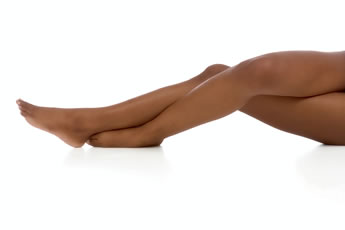 Corns and calluses can become annoying if they grow to become irritating. Corns and calluses form as a result of constant rubbing and pressure on the feet. Calluses are usually flat bumps while corns are thick and circular. When treating your corns and calluses, make sure to see a health professional first. Using instruments like a pumice stone may be sufficient enough to remove smaller bumps, but refrain from using any sharp implements on your skin. Orthotics and insoles can also help alleviate any pain and pressure on your feet.
Corns and calluses can become annoying if they grow to become irritating. Corns and calluses form as a result of constant rubbing and pressure on the feet. Calluses are usually flat bumps while corns are thick and circular. When treating your corns and calluses, make sure to see a health professional first. Using instruments like a pumice stone may be sufficient enough to remove smaller bumps, but refrain from using any sharp implements on your skin. Orthotics and insoles can also help alleviate any pain and pressure on your feet.
If you have any concerns about your feet and ankles contact one of our podiatrists of Livingston Footcare. Our doctors will treat your foot and ankle needs.
Corns: What are they? And how do you get rid of them?
Corns can be described as areas of the skin that have thickened to the point of becoming painful or irritating. They are often layers and layers of the skin that have become dry and rough, and are normally smaller than calluses.
Ways to Prevent Corns
There are many ways to get rid of painful corns such as wearing:
- Well-fitting socks
- Comfortable shoes that are not tight around your foot
- Shoes that offer support
Treating Corns
Treatment of corns involves removing the dead skin that has built up in the specific area of the foot. Salicylic acid can help in getting rid of these corns because it dissolves keratin, which is the protein that makes up a good majority of corns. Podiatrists recommend that people with diabetes not use salicylic acid but should consult with their podiatrist regarding the treatment of corns.
If you have any questions feel free to contact our office located in North Brunswick, NJ. We offer the newest diagnostic tools and technologies to fit your foot and ankle needs.
 If you have Morton’s neuroma, then you may experience numbness or pain in your feet. Morton’s neuroma is described as a cyst that develops on your toes from repeated pressure. The cyst can cause pain and swelling, and if not treated, can change your gait. Morton’s neuroma, however, can be treated by taking over-the-counter medications, soaking your condition in hot and cold water alternatively, wearing arch supports, and giving your feet rest from physical activity. Custom orthotics can help treat Morton’s neuroma, but a good solution is to change to shoes that are comfortable and better fitting for your feet.
If you have Morton’s neuroma, then you may experience numbness or pain in your feet. Morton’s neuroma is described as a cyst that develops on your toes from repeated pressure. The cyst can cause pain and swelling, and if not treated, can change your gait. Morton’s neuroma, however, can be treated by taking over-the-counter medications, soaking your condition in hot and cold water alternatively, wearing arch supports, and giving your feet rest from physical activity. Custom orthotics can help treat Morton’s neuroma, but a good solution is to change to shoes that are comfortable and better fitting for your feet.
Morton’s Neuroma is a very uncomfortable condition to live with. If you think you have Morton’s neuroma contact one of our podiatrists of Livingston Footcare. Our doctors will treat your foot and ankle needs.
Morton’s Neuroma
Morton's neuroma is a painful foot condition that commonly affects the areas between the second and third or third and fourth toe, although other areas of the foot are also susceptible. Morton’s neuroma is caused by an inflamed nerve in the foot that is being squeezed and aggravated by surrounding bones.
What Increases the Chances of having Morton’s Neuroma?
· -Ill-fitting high heels or shoes that add pressure to the toe or foot
· -Jogging, running or any sport that involves constant impact to the foot
· -Flat feet, bunions, and any other foot deformities
Morton’s neuroma is a very treatable condition. Orthotics and shoe inserts can often be used to alleviate the pain on the forefront of the feet. In more severe cases, corticosteroids can also be prescribed. In order to figure out the best treatment for your neuroma, it’s recommended to seek the care of a podiatrist who can diagnose your condition and provide different treatment options.
If you have any questions feel free to contact our office located in North Brunswick, NJ. We offer the newest diagnostic tools and technologies to fit your foot and ankle needs.
 Greater trochanteric pain syndrome affects about 10 to 25 percent of the population, of which symptoms include lateral hip pain. The syndrome seems to affect women more than men, and older individuals are more prone to the condition. The treatment options for greater trochanteric pain syndrome are limited, but shockwave therapy is one possible solution. According to studies, shockwave therapy effectively reduced pain in patients who responded to the treatment. In addition to shockwave therapy, exercises to strengthen your muscles can supplement recovery from the syndrome.
Greater trochanteric pain syndrome affects about 10 to 25 percent of the population, of which symptoms include lateral hip pain. The syndrome seems to affect women more than men, and older individuals are more prone to the condition. The treatment options for greater trochanteric pain syndrome are limited, but shockwave therapy is one possible solution. According to studies, shockwave therapy effectively reduced pain in patients who responded to the treatment. In addition to shockwave therapy, exercises to strengthen your muscles can supplement recovery from the syndrome.
Shockwave therapy is a treatment commonly used to treat various injuries and conditions, particularly plantar fasciitis in the feet. To learn more, contact one of our podiatrists of Livingston Footcare. Our doctors will fulfill your foot and ankle needs.
Shockwave Therapy
Shockwave therapy is a new treatment option designed to treat bone conditions such as tennis elbow, shoulder pain, and others. Shockwave therapy uses high intensity sound waves that are directed to the affected tissues of the body with pinpoint accuracy. The effects are very beneficial, leading to a production of collagen fibers, eliminating inflammation.
Who Benefits from Shockwave?
Shockwave is recommended for patients suffering from heel pain and associated problems. Heel pain is a common condition which can be caused by obesity, overexertion, and spending a substantial amount of time on hard floors with your feet exposed and unsupported.
Fast and Easy
The therapy is actually a simple process that can leave patients feeling better the very next day. Shockwave therapy is not as dramatic as it sounds. It enables more blood flow to effected areas, attacking the source of the problem so treatment lasts for a long time.
Treatment & Recovery Time
Shockwave treatment will enable your feet to recover quickly. This is especially important since surgery is not required. It is cost effective and does not require the use of anesthesia. This treatment is a better option to surgery, since it is proven safe.
If you have any questions feel free to contact our office located in North Brunswick, NJ. We offer the newest diagnostic tools and technologies to fit your foot and ankle needs.
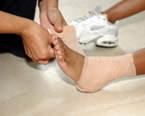 Alec Burks of the Utah Jazz will have to undergo surgery for a broken ankle despite being told no additional surgery would be required. Jazz sources stated, “Alec has chosen to have the surgery because it will potentially allow him to come back at an earlier date.” With Burks away from the Jazz, Coach Quin Snyder will have to decide what is necessary for the team before the All-Star Break.
Alec Burks of the Utah Jazz will have to undergo surgery for a broken ankle despite being told no additional surgery would be required. Jazz sources stated, “Alec has chosen to have the surgery because it will potentially allow him to come back at an earlier date.” With Burks away from the Jazz, Coach Quin Snyder will have to decide what is necessary for the team before the All-Star Break.
Foot surgery is a serious deal and typically done if other treatments do not seem to work. If you have any concerns about your feet, contact one of our podiatrists of Livingston Footcare. Our doctors will fulfill your foot and ankle needs.
When Is Surgery Necessary?
Foot and ankle surgery is generally reserved for extreme cases in which less invasive, conservative procedures have failed to help with the problem. Some of the cases in which surgery may be necessary are:
· Removing foot deformities like bone spurs and bunions
· Severe arthritis that has caused bone issues
· Cosmetic reconstruction
What Types of Surgery Are There?
The type of surgery you receive will depend on the nature of the problem you have. Some of the possible surgeries include:
· Bunionectomy for painful bunion growth
· Surgical fusion for realignment of bones
· Neuropathy decompression surgery to treat nerve damage
Benefits of Surgery
Although surgery is usually a last resort, it can provide more complete pain relief compared to non-surgical methods and may allow you to finally resume full activity.
Surgical techniques have also become increasingly sophisticated with technological advancement. Techniques like endoscopic surgery allow for smaller incisions and faster recovery times.
If you have any questions feel free to contact our office located in North Brunswick, NJ. We offer the newest diagnostic tools and technologies to fit your foot and ankle needs.
Read more about When is Foot Surgery Necessary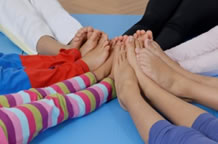 Keeping your shoes clean is one important factor in ensuring your feet stay clean too. Make sure to always wear socks to prevent moisture from accumulating in your shoes or on your feet. Wash your feet often to repel foot odor and odor-causing bacteria. Antiperspirant sprays are also great for killing bacteria and getting rid of foot odor. Other less common solutions include using insoles that have activated charcoal, or carbon. Activated charcoal insoles are absorbent and can be adjusted to fit the size of your shoe. Use moisture-absorbing material like cedar shoe trees or newspaper to put in your shoes after wearing them. Don’t forget to also swap often between different pairs of shoes.
Keeping your shoes clean is one important factor in ensuring your feet stay clean too. Make sure to always wear socks to prevent moisture from accumulating in your shoes or on your feet. Wash your feet often to repel foot odor and odor-causing bacteria. Antiperspirant sprays are also great for killing bacteria and getting rid of foot odor. Other less common solutions include using insoles that have activated charcoal, or carbon. Activated charcoal insoles are absorbent and can be adjusted to fit the size of your shoe. Use moisture-absorbing material like cedar shoe trees or newspaper to put in your shoes after wearing them. Don’t forget to also swap often between different pairs of shoes.
Every day foot care is very important to prevent infection and other foot ailments. If you need your feet checked, see Dr. Dave Poonai of Livingston Footcare. Our doctor will treat your feet in addition to other podiatric-related needs.
Every Day Foot Care
Often, people take care of their bodies, face and hair more so than they do for their feet. But the feet are a very important aspect of our bodies, and one that we should pay more attention to. After all, without our feet, we would not be able to perform most daily tasks. It is best to check your feet regularly to make sure there are no new bruises or cuts that you may not have noticed before, for example.
For dry feet, moisturizer can easily be a remedy and can be applied as often as necessary to the affected areas. Wearing shoes that fit well can also help you maintain good foot health, as well as making it easier to walk and do daily activities without the stress or pain of ill-fitting shoes, high heels, or even flip flops.
Also, wearing clean socks with closed shoes is important to ensure that sweat and bacteria do not accumulate within the shoe. Clean socks help to prevent athlete’s foot, fungi problems, bad odors, and can absorb sweat.
If you have any questions please feel free to contact our office located in North Brunswick, NJ. We offer the newest diagnostic tools and technology to treat your foot and ankle needs.
 Duke’s senior forward Amile Jefferson will be sidelined for a month following a broken right foot injury after the game against Utah in Madison Square Garden. Jefferson is considered Duke’s “most consistent front court player” in the season and his absence will impact the team. Jefferson averages 11.4 points. Duke won the game against Utah with a score of 9-1, a new record.
Duke’s senior forward Amile Jefferson will be sidelined for a month following a broken right foot injury after the game against Utah in Madison Square Garden. Jefferson is considered Duke’s “most consistent front court player” in the season and his absence will impact the team. Jefferson averages 11.4 points. Duke won the game against Utah with a score of 9-1, a new record.
A broken foot requires immediate medical attention and treatment. If you need your feet checked, see Dr. Dave Poonai of Livingston Footcare. Our doctor will treat your feet in addition to other podiatric-related needs.
Broken Foot Causes, Symptoms, and Treatment
A broken foot is caused by one of the bones in the foot typically breaking when bended, crushed, or stretched beyond its natural capabilities. Usually the location of the fracture indicates how the break occurred, whether it was through an object, fall, or any other type of injury.
Common Symptoms of Broken Feet:
Bruising
Pain
Redness
Swelling
Blue (foot)
Numbness
Cold
Misshapen
Cuts
Deformities
Those that suspect they have a broken foot shoot seek urgent medical attention where a medical professional could diagnose the severity.
Treatment for broken bones varies depending on the cause, severity and location. Some will require the use of splints, casts or crutches while others could even involve surgery to repair the broken bones. Personal care includes the use of ice and keeping the foot stabilized and elevated.
If you have any questions please feel free to contact our office located in North Brunswick, NJ. We offer the newest diagnostic tools and technology to treat your foot and ankle needs.
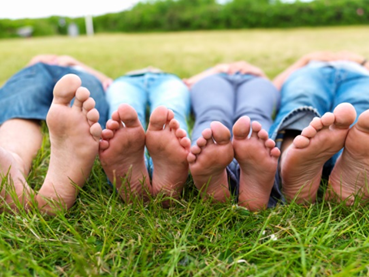 Photographer Stacy Kranitz, picked by Time magazine as Photographer of the Year 2015, suffered from plantar warts during the height of her career. Kranitz walked along the streets of California photographing people for a project, searching for young people to connect with. She says that her case of plantar warts “forc[ed] her to work more intimately with people,” as she could not walk very well because of the pain. Kranitz’s project focused on poverty and culture, often engaging closely with her photograph subjects.
Photographer Stacy Kranitz, picked by Time magazine as Photographer of the Year 2015, suffered from plantar warts during the height of her career. Kranitz walked along the streets of California photographing people for a project, searching for young people to connect with. She says that her case of plantar warts “forc[ed] her to work more intimately with people,” as she could not walk very well because of the pain. Kranitz’s project focused on poverty and culture, often engaging closely with her photograph subjects.
Plantar warts can be very uncomfortable. If you need your feet checked, see Dr. Dave Poonai of Livingston Footcare. Our doctor will treat your feet in addition to other podiatric-related needs.
About Plantar Warts
Plantar warts are the result of HPV, or human papillomavirus, getting into open wounds on the feet. They are mostly found on the heels or balls of the feet.
While plantar warts are generally harmless, those experiencing excessive pain or those suffering from diabetes or a compromised immune system require immediate medical care. Plantar warts are easily diagnosed, usually through scraping off a bit of rough skin or by getting a biopsy.
Symptoms
· Legions on the bottom of your feet, usually rough and grainy
· Hard or thick callused spots
· Wart seeds, which are small clotted blood vessels that look like little black spots
· Pain, discomfort, or tenderness of your feet when walking or standing
Treatment
· Freezing
· Electric tool removal
· Laser Treatment
· Topical Creams (prescription only)
· Over-the-counter medications
To help prevent developing plantar warts, avoid walking barefoot over abrasive surfaces that can cause cuts or wounds for HPV to get into. Avoiding direct contact with other warts, as well as not picking or rubbing existing warts, will help prevent the further spread of plantar warts. However, if you think you have developed plantar warts, speak to your podiatrist. He or she can diagnose the warts on your feet and recommend the appropriate treatment options.
If you have any questions please feel free to contact our office located in North Brunswick, NJ. We offer the newest diagnostic tools and technology to treat your foot and ankle needs.